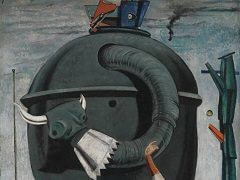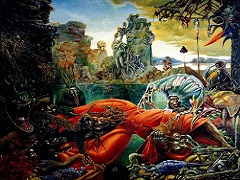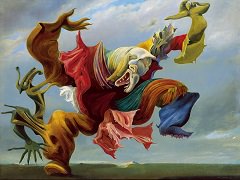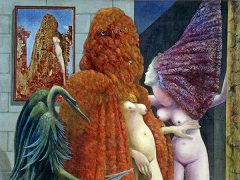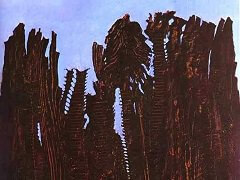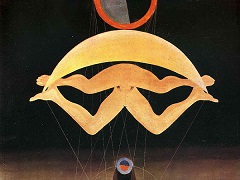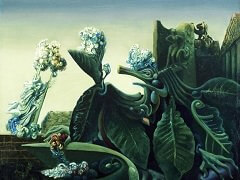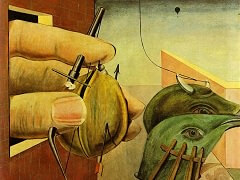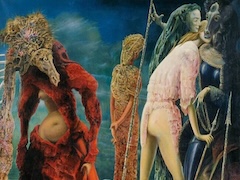Europe after the Rain II, 1940-42 - by Max Ernst
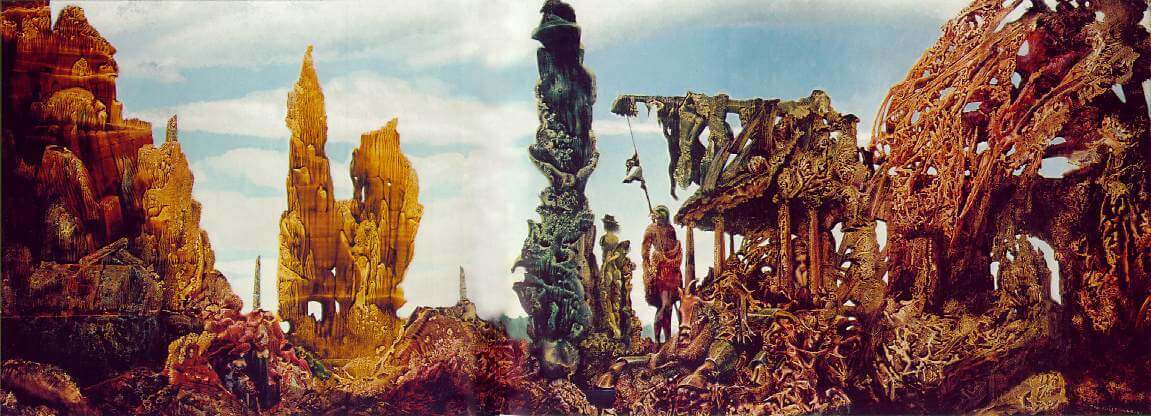
Medium of war, Max Ernst. Europe After the Rain remains his pullulating masterpiece, in which emotional desolation, physical exhaustion, and fears of the destructive power of total warfare combine - after the rain of fire, the biblical deluge, and the reign of terror. The title dates back to an earlier painting sculpted from plaster and oil (and painted on plywood) to create an imaginary relief map of a remodeled Europe completed in 1933, the year Hitler took power.
Europe after the Rain, II makes extensive use of the techniques Ernst invented, portraying a ravaged landscape reminiscent of both twisted wreckage and rotting organic proliferation. Are we witnesses to an apocalypse, or uncontrolled, cancerous growth?
True to Ernst's methods, there is no definitive interpretation, but given his personal history, his flight from the Gestapo into self-imposed exile, and his disgust at the effects of war, it's not hard to see a restrained melancholy on display.
In a landscape reminiscent of classical paintings of ruins, the figures could be overgrown statuary, or semi-mythical survivors of a forgotten war. A helmeted, bird-headed soldier threatens a female figure with a spear - or perhaps a ruined battle standard. Perhaps it is an allegory for the destruction of European civilization. Perhaps it is a denouncement, showing that once the dignified veneer of civilization is stripped away, only chaotic masses of half-formed nightmares remain. However you take it, Europe After the Rain II is a powerful image that provokes more questions than it answers, and a true masterpiece of Ernst's ouevre.

